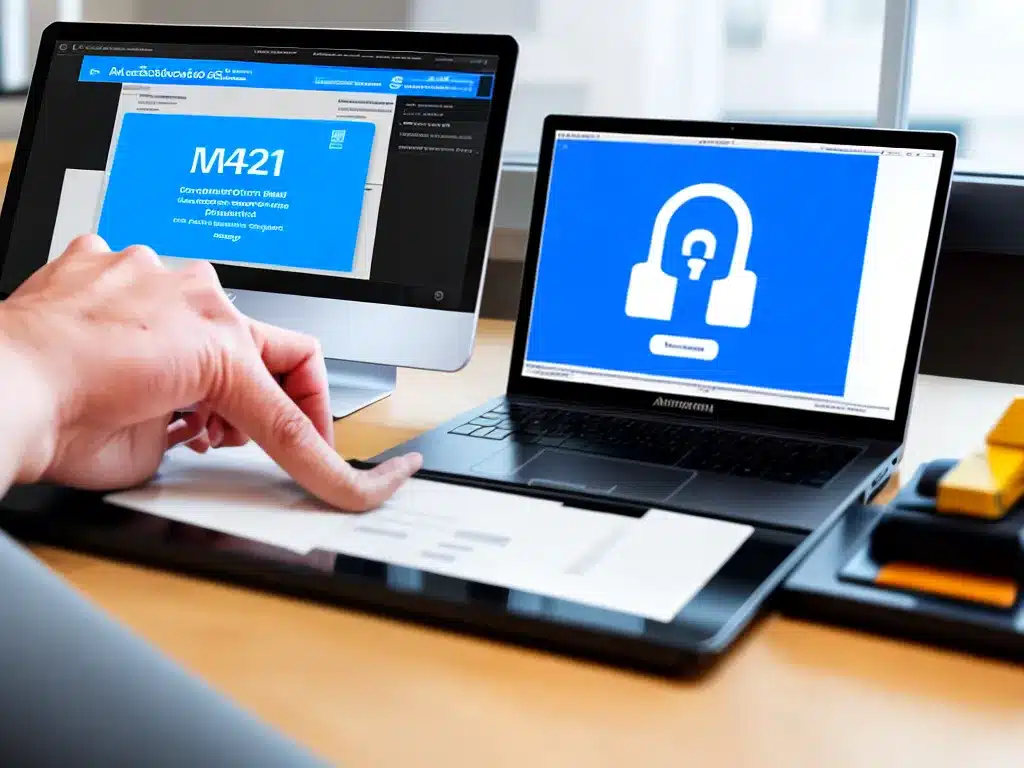
How Effective is Multi-Factor Authentication in 2024?
Introduction
Multi-factor authentication (MFA) has become an increasingly popular security measure in recent years. As cyberattacks become more sophisticated, companies and individuals are looking for ways to improve authentication beyond just usernames and passwords. In this article, I will examine the effectiveness of MFA in 2024 and discuss the pros and cons of different MFA methods.
What is Multi-Factor Authentication?
Multi-factor authentication requires users to present two or more verification factors to gain access to a resource or account. The three main types of factors are:
-
Something you know – This is typically a password or PIN code.
-
Something you have – This could be a physical token like a smart card or a software token on your mobile device.
-
Something you are – This refers to biometrics like fingerprints or facial recognition.
By combining two or more factors, MFA makes it much harder for attackers to gain access to accounts fraudulently. Even if they steal your password, they won’t be able to log in without the second factor.
The Rising Popularity of MFA
MFA has become increasingly popular in recent years. According to a 2021 survey, over 75% of organizations now use MFA for at least some users and applications. This is up from around 60% in 2019.
There are several reasons for the growing adoption of MFA:
-
Increasing cyberattacks – High profile breaches like Yahoo and LinkedIn have highlighted the risks of relying on single factor authentication alone. MFA helps mitigate these risks.
-
Compliance requirements – Regulations like PCI DSS require MFA for secure payment processes. Government agencies also often mandate MFA.
-
Cloud adoption – As more services move to the cloud, MFA provides an extra layer of protection for cloud-based logins.
-
Increased remote work – With more employees working remotely, MFA protects access from outside the corporate network.
The Effectiveness of MFA in 2024
Based on current trends, I expect MFA adoption to continue growing steadily through 2024. Here are some predictions on the effectiveness of MFA:
-
Over 90% of large enterprises will use MFA – For companies managing sensitive data, MFA will become a standard security practice.
-
Growth in FIDO standards adoption – Passwordless standards like FIDO will gain traction as part of MFA, reducing phishing risks.
-
Improved user experience – Advancements in behavioral biometrics will allow transparent MFA that doesn’t interrupt workflows.
-
Higher cost of breaches for companies without MFA – Not having MFA will be considered negligent by auditors and regulators.
-
Lower barriers for small business adoption – Simple MFA tools through mobile devices and cloud providers will make rollout easier.
While MFA will become more widespread, organizations need to carefully evaluate different options to balance security and user experience.
MFA Methods Comparison
There are a variety of MFA methods to choose from for different use cases. Here is a comparison:
| Method | Security | Usability | Cost |
|-|-|-|-|
| SMS Codes | Medium | Medium | Low |
| Email Codes | Medium | Medium | Low |
| TOTP Apps | High | Medium | Low |
| Push Notifications | High | High | Medium |
| Security Keys | Very High | Medium | High |
| Biometrics | High | High | High |
SMS and email codes are easy to implement but vulnerable to phishing and social engineering.
TOTP apps like Google Authenticator provide a good balance of security and usability.
Push notifications are convenient but have connectivity requirements.
Security keys like Yubikey offer very high security for critical systems.
Biometrics like fingerprint scanning can provide a seamless user experience but have high costs.
Organizations need to evaluate threat models, use cases, and budgets when selecting MFA solutions.
Challenges of MFA Adoption
While MFA is highly effective, there are still some challenges to overcome:
-
User education – If users aren’t properly trained on using MFA, they may expose codes or use weak registration methods.
-
Compatibility issues – Certain legacy systems may not integrate well with some MFA methods.
-
Helpdesk overload – Incorrect MFA configuration can overwhelm helpdesks with lockout requests.
-
Lack of standards – Proprietary MFA systems sometimes don’t interoperate well together.
With proper planning and change management, organizations can successfully roll out MFA while avoiding these pitfalls.
Conclusion
MFA has cemented itself as an essential security tool to protect against account takeover and fraudulent access. As cyberattacks get more advanced, MFA provides a robust second line of defense. While organizations need to weigh different options carefully based on their specific needs, the adoption of MFA will continue growing rapidly through 2024 and beyond. With proper user training and implementation, companies can harness the strengths of MFA to secure critical systems and data.












